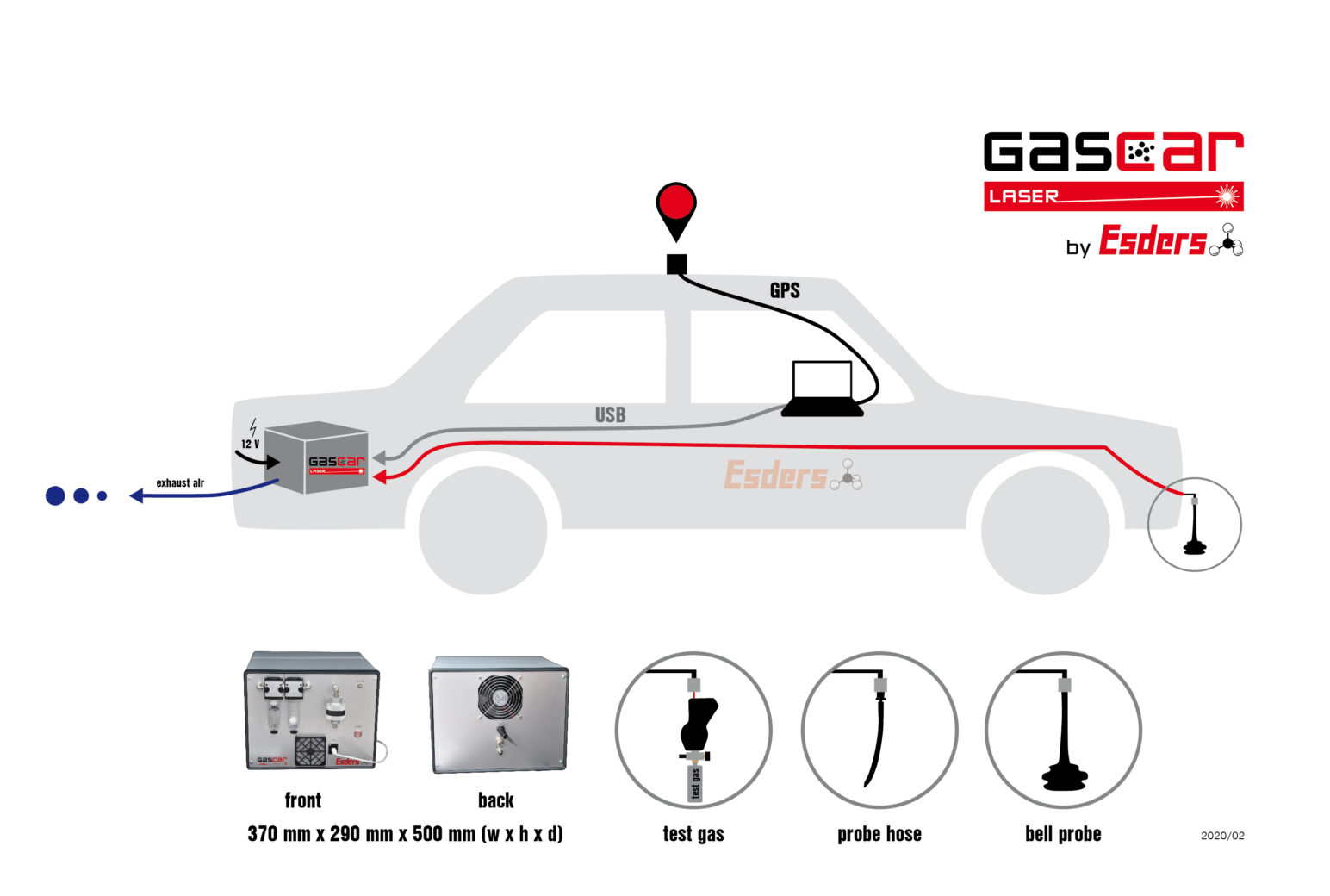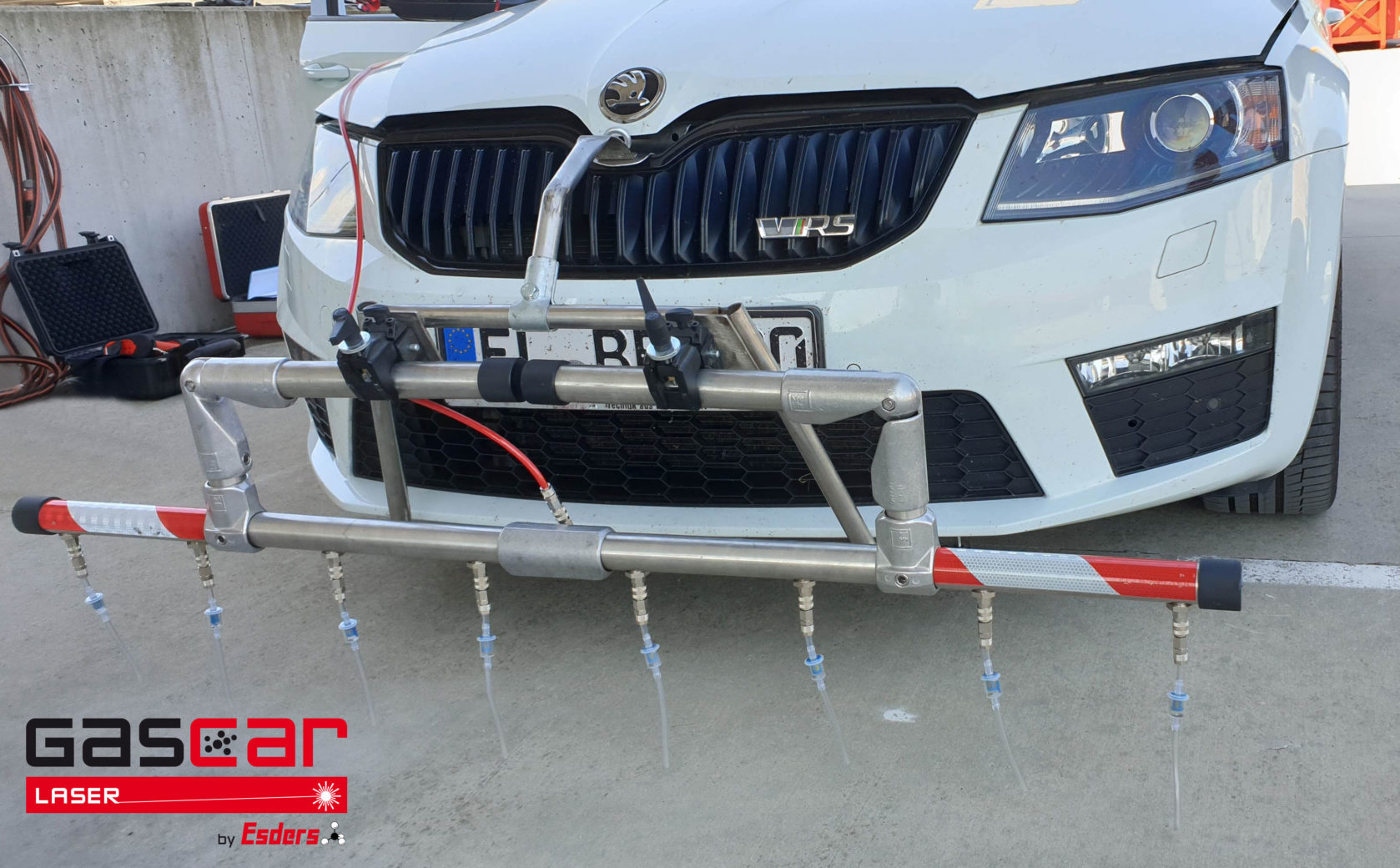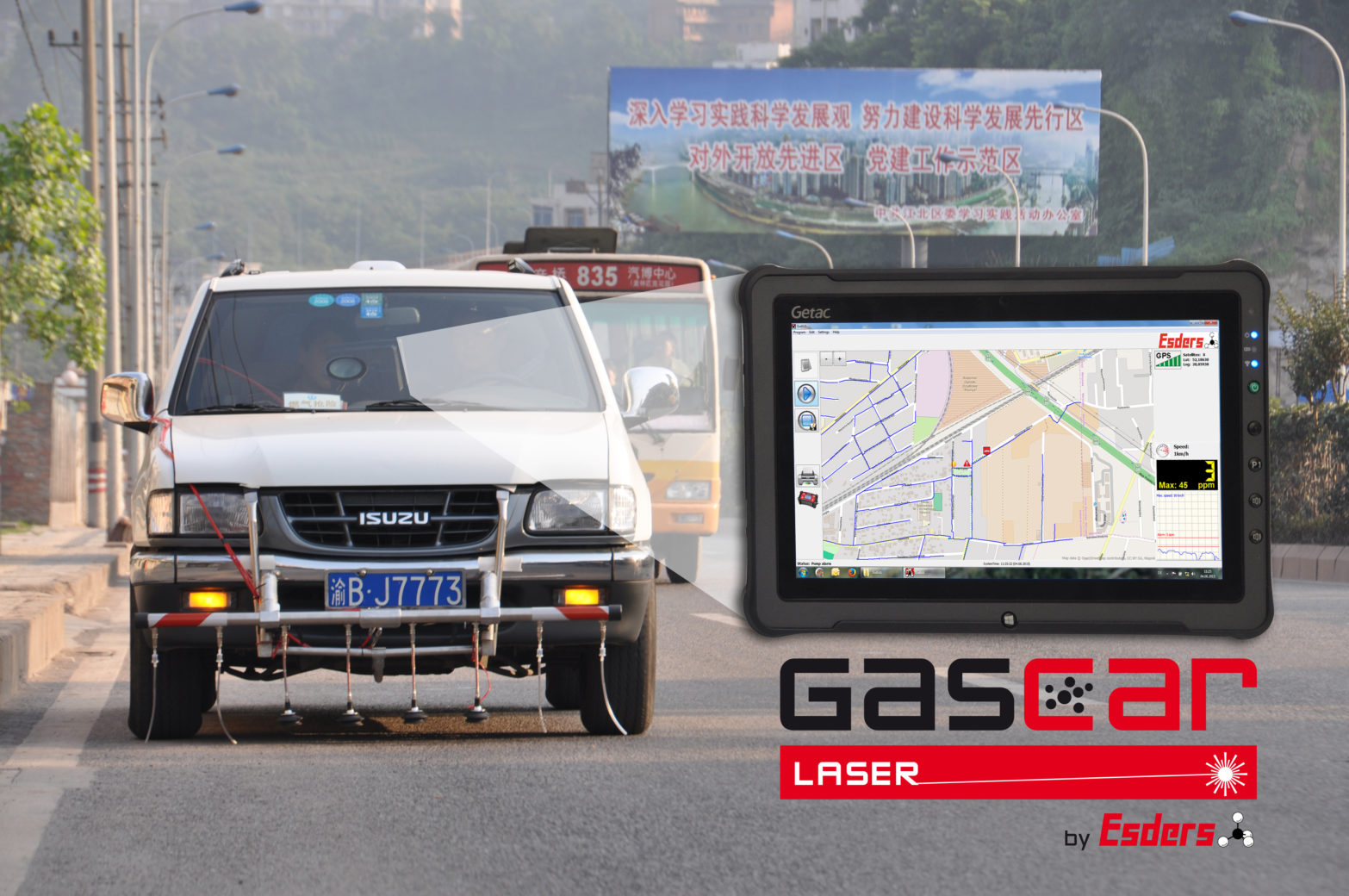Vehicle-based inspection of gas pipes
The revision of the G 465 in the German DVGW rules and regulations has resulted in a number of alterations. For example, the vehicle-based inspection of gas pipelines located on roads has been included for the first time. For us, this means that it will be permitted to use vehicle-based systems for gas leak detection in Germany in the future.
GasCar setup

This technology has been used abroad for many years and has not been state of the art or covered by the regulations in Germany. We have also been offering such a system for different vehicle types under the name “GasCar” abroad for a long time. However, from our point of view the same quality cannot be obtained with the vehicle-based inspection as with the inspection with the carpet probe and the gas detector. This is due to the constraint that we could otherwise not participate in many international tenders.
There are special circumstances in which a vehicle has its entitlement. Anyone who has ever seen the traffic on eight-lane roads in large Asian cities can imagine that the inspection on foot is tedious and only possible at the risk of one’s life.
To ensure that the choice of use is not made solely on the basis of cost considerations, the responsibility for selecting this procedure has been clearly assigned to the client in Germany in the G 465-1. Since the assessment is not always easy, the German DVGW commissioned a research project to compare the suitability of the processes.
What are the disadvantages of using a gas car?
I would like to give some arguments for this:
– A vehicle has to adapt to the traffic situation and when vehicles park on the side of the road it cannot inspect the pipeline located there.
– Even if the pipeline is a few meters into the road area, the gas leak is often at the side of the road at the transition to the sidewalk.
– A vehicle travels at a much higher speed and some manufacturers mention illusory possible speeds for the inspection. The recommended speed for the pedestrian gas detector is 4 km/h. This corresponds to approx. 1.1 m per second. If we now assume 25 km/h for the vehicle, it will travel about 7 m in one second. This means that only a fraction of the time is available for sucking in the gas sample. Now many will say that the performance of the pump is much higher for the vehicle-based systems. That is true, but it also means that much more secondary air is sucked in. And it should be noted that the gas usually does not escape over a large area. As a result, it is possible that only one intake bell or suction hose sucks in the gas and all other air. This leads to a corresponding dilution which makes the detection even more difficult.
Our recommendation:
Only use the vehicle-based solution in undeveloped areas, e.g. pipes between localities. Difficulties with parked cars and gas ingress into buildings are then eliminated.
Recently, new methods have emerged as competition to the well-known, vehicle-based systems, which can measure gas concentrations in the parts per billion (ppb = parts per billion) range and even want to find leaks on mains supply lines by additionally determining the wind speed.
Field test: GasCar in Austria

In 2019 we were contacted by the ÖVGW (counterpart of the DVGW in Austria) to participate in a benchmark test with such a ppb system. All other providers contacted did not participate for whatever reason.
We were very uncertain and had great concerns. After all, the sensitivity stated by the other manufacturer, the six-figure price and also high license fees suggest that there must be huge differences in performance.
We went there anyway.
The test with the vehicle-mounted gas detection systems was carried out over two days. On the first day, different gas leaks had to be traced on a test track at 10 km/h, 20 km/h and 30 km/h and two different leak sizes had to be detected.
On the second day, various leaks in road traffic in Vienna were approached and also inspected at 10, 20 and 30 km/h.
The result was very positive for us, because our latest GasCar was able to locate the same number of leaks as the competition.
Download the results of our GasCar test here
Customers, who are interested in receiving a test report from us, please download it here. We are also always available for further, detailed information and advice.
Read our latest blog article on vehicle-based gas leak detection with the results of the DVGW’s EvaNeMeL research project to evaluate new measurement methods.

